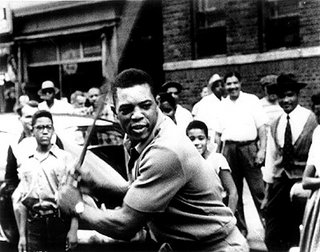Halfball

As the summer wound down, while I plowed through assorted, absurd administrative duties required for coaching a boys' travel soccer team (eg, acquiring a state license; collecting birth certificates, notarized medical clearance forms, uniform sizes...everything short of DNA samples), I found myself taking brief refuge in memories of playing halfball with friends and assorted kid-passerby in the old Philadelphia neighbhorhood where my grandparents owned a luncheonette. Playing games was much simpler then. Parents did not have to produce birth certificates. Notary Publics had more time to stamp whatever else it is they stamp. Well-intentioned parent-coaches who'd found they'd bitten off more than they could chew did not have the technology to share their anxiety via a flood of overbearing e-mails to the families of the kids on their teams. Kids met on whatever playing surface would suffice, brought the appropriate ball, and made do with as few tools as possible.
Halfball, if you don't know what I'm talking about, is a city form of baseball at its lowest common denominators: a half of a "pimple ball" that already has served its purpose as a full ball in games of stickball is flung underhanded at a batter who tries to whack it over a building with a broomstick. I'll discuss the game in the present tense, because I have read about gray beards who have organized to keep the game alive, start websites in honor of their leagues, and most likely give Notary Publics even more to do. I don't know if the game is actually played by "the kids" anymore, whether games are instigated in the casual way we used to initiate games as bored kids looking for something to do on grimey summer city streets in humid, northeastern neighborhoods, but let's alllow ourselves this possibility.
Games are usually 1-on-1 or 2-on-2. The is game played across narrow city streets lined by rowhouses and/or factory buildings. Ideally, the outfield wall is a couple of stories high. If the ball goes on the roof of the building across the street, it's a home run. If it hits, say, above the second story but not on the roof it's a triple. If it hits the wall on the wall, say, beneath the third story, it's a double. If it drops past the pitcher without being caught on the fly it's a single. Simple. Flinging the halfball just right took some work, and making solid contact with a broom handle on a floppy piece of well-worn rubber never failed to impress a batter. How many times did I have that halfball lined up just right to unfurl my swing and feel the rubber collapse impotently on contact and dribble off a foot or two to the left side of the plate? Ah, but those times the halfball seemed to wrap around the stick just long enough to get hoisted over the roof of the cardboard box factory across the street were magic!
 As a kid who grew up on a newer, rowhouse neigbhorhood in Philadelphia, where the streets and tiny front lawns were too wide for the game (Northeast Philly was a stickball/street hockey neighborhood), playing halfball in my grandparents' Port Richmond neighborhood gave me added "city cred" and made me feel tied into a part of baseball history that is now long gone - that time when Willie Mays or some other northeast corridor player would stop by a neighborhood pickup game and take a few mighty swings. Will another professional baseball player ever stop by a neighbhorhood game of "halfies" or stickball and take a rip?
As a kid who grew up on a newer, rowhouse neigbhorhood in Philadelphia, where the streets and tiny front lawns were too wide for the game (Northeast Philly was a stickball/street hockey neighborhood), playing halfball in my grandparents' Port Richmond neighborhood gave me added "city cred" and made me feel tied into a part of baseball history that is now long gone - that time when Willie Mays or some other northeast corridor player would stop by a neighborhood pickup game and take a few mighty swings. Will another professional baseball player ever stop by a neighbhorhood game of "halfies" or stickball and take a rip? This past summer, after Phils centerfielder Aaron Rowand cemented his local folk hero status by laying it all on the line with a hellbent, face-first catch into the fence in Citizens Bank Park, Rowand talked about his commitment to the game and his respect for the commitment his parents made to him as a boy, spending their summers driving him around to baseball games for 3 teams he played for simultaneously! I wish I could find the story for you to read. It was a touching story, a totally crazed story, and an especially suburban story with which I can now identify. It was a story for our times, but it was far removed from the story of a kid who played halfball in the summer, in the city.
